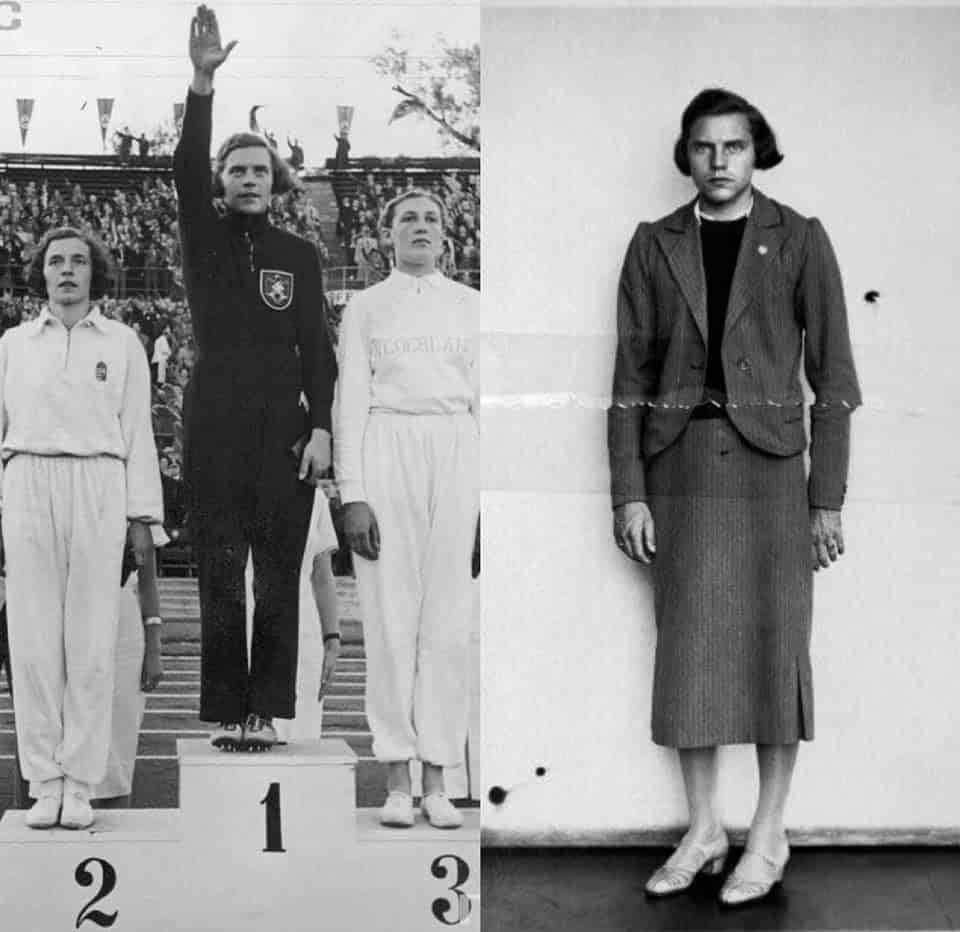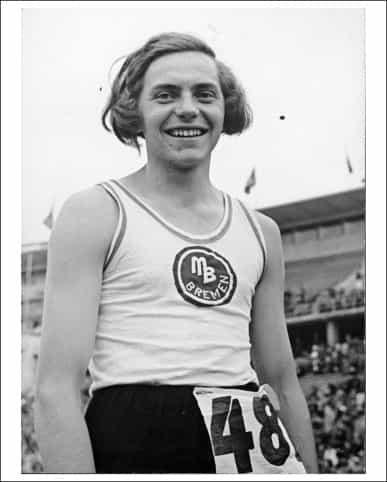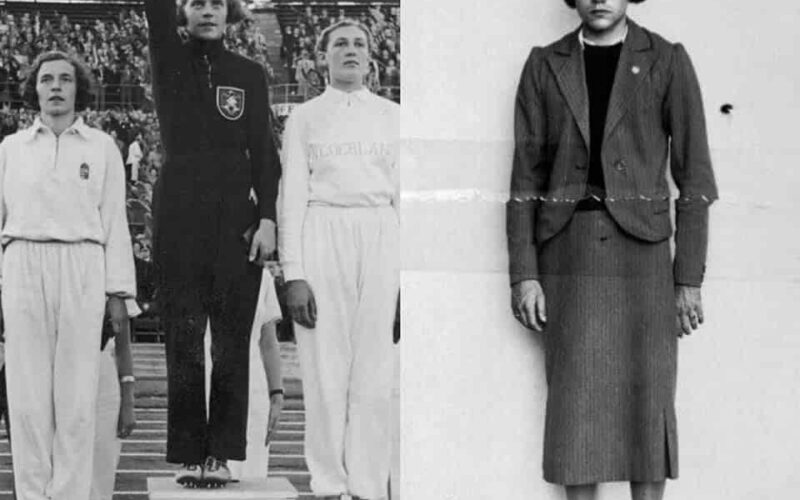Dora Ratjen, the man who competed as a woman at the 1936 Berlin Olympic Games

The story of Dora Ratjen is one of the most remarkable, controversial, and complex in the history of athletics, raising questions about gender, identity, and the impact of politics on sport.
Dora Ratjen, a German high jumper, became infamous for a scandal that erupted after competing in the 1936 Summer Olympics. The journey of this athlete’s life reveals a deeper narrative involving a society in transition, personal identity, and the lasting effects of historical misinterpretations.
Early Life and Athletic Career
Born on November 20, 1918, in Erichshof, Germany, Dora Ratjen grew up in a time of significant social and political change. Initially, Ratjen was raised and identified as female by the family and surrounding community, despite possessing ambiguous genitalia. Intersex people, like Ratjen, often faced confusing and conflicting societal expectations due to the lack of medical understanding at the time.
Dora’s talent as an athlete became apparent at a young age, and by the time of adolescence, Ratjen was actively competing in national and international events. Germany, during the 1930s, was fervently preparing for the 1936 Berlin Olympics under the Nazi regime, which saw athletic prowess as a means to showcase national strength. For Ratjen, the pressure to succeed was high, as athletes were celebrated as national heroes, contributing to Germany’s sense of superiority.
The 1936 Berlin Olympics
At the 1936 Berlin Olympics, Dora Ratjen competed in the high jump event, representing Nazi Germany. This Olympics was already loaded with political undertones, with Adolf Hitler using the games to propagate Aryan ideals. Although Ratjen did not win a medal, placing fourth, the event marked a pivotal moment in the athlete’s life.
Interestingly, the Berlin Olympics were marred by rumors and speculation surrounding athletes’ gender, but Ratjen was not yet in the spotlight for any gender-related controversy. However, the seeds of doubt had been planted, and whispers about the athlete’s appearance began to circulate.
European Championships and the Scandal
In 1938, Dora Ratjen competed in the European Athletics Championships in Vienna, Austria, where the athlete won a gold medal in the women’s high jump, setting a world record with a leap of 1.67 meters. This achievement should have been a crowning moment in Ratjen’s career, but it became the turning point in a public scandal that would follow.

Shortly after the championships, suspicions about Dora’s gender intensified. Some fellow athletes and spectators had commented on the athlete’s muscular build and more traditionally masculine features, prompting officials to launch an investigation. In September 1938, while traveling by train from Vienna to Cologne, Dora was stopped and questioned by police after a passenger reported that Ratjen looked like a man wearing women’s clothing. The police conducted an examination and concluded that Ratjen was biologically male, not female.
The Truth Behind Dora Ratjen’s Identity
After being questioned by the police and doctors, Ratjen admitted to being raised as a female but revealed that the athlete had never felt completely comfortable in that identity. It was discovered that Ratjen had ambiguous genitalia, making the athlete intersex, with both male and female biological characteristics. At the time, medical science and societal understanding of intersex individuals were rudimentary, often forcing people like Ratjen into binary gender roles.
In the wake of this discovery, Dora Ratjen was stripped of the European Championship title and the world record. The German athletic authorities revoked the athlete’s accolades, and Dora Ratjen’s career as a high jumper was effectively over.
Nazi Regime and Speculation
For years, a myth circulated that Dora Ratjen had been coerced by the Nazi regime to compete as a female in order to bolster Germany’s chances of winning medals in women’s events. However, there is little evidence to suggest that this was a deliberate plan. Most historians now believe that Ratjen’s case was one of personal identity confusion, rather than political manipulation.
Dora Ratjen later revealed in interviews that there had been no pressure from the Nazi authorities. Instead, Ratjen’s life was shaped by the social expectations and medical misunderstandings of the time. The pressure to conform to societal norms of gender likely played a significant role in the athlete’s upbringing and eventual exposure.
Life After the Scandal
Following the end of Ratjen’s athletic career, Dora chose to live the rest of life as Heinrich Ratjen, adopting a male identity after the discovery. The scandal had a profound impact on Heinrich’s life, leading to a withdrawal from public attention. Ratjen worked in relative obscurity, living a quiet life in Germany until passing away in 2008.
Though the scandal haunted Ratjen for many years, it also brought attention to issues of gender and identity in sport, which remain highly relevant in modern athletic discussions. The case is often cited in debates about the fairness of gender categories in sports, especially in cases of athletes with intersex conditions or those undergoing gender transitions.
Legacy and Impact
Dora Ratjen’s story remains a cautionary tale about the dangers of rigid gender expectations and the societal pressure to conform to traditional categories of male and female. The case sheds light on the complex lives of intersex individuals, who often face difficult decisions about their identity in a world that rarely accommodates ambiguity.
In modern times, athletes like Caster Semenya have faced similar scrutiny, with debates over their participation in women’s events becoming highly publicized. While the world has made strides in understanding gender diversity, the struggles faced by people like Dora Ratjen continue to resonate, serving as a reminder that sports, like society, must evolve to be more inclusive.
The story of Dora Ratjen is one of personal conflict, societal pressure, and historical misinterpretation. It is a tale that challenges our understanding of identity, the role of politics in sport, and how people navigate gender in a world that has long enforced binary norms. Though Ratjen’s athletic career ended in scandal, the legacy of this athlete’s life continues to contribute to essential conversations about gender, fairness, and inclusivity in sports today.
FAQ: Dora Ratjen Story
1. Who was Dora Ratjen?
Dora Ratjen was a German athlete who competed in women’s high jump events during the 1930s. Born intersex, Ratjen was raised as a female and represented Germany in several competitions, including the 1936 Summer Olympics in Berlin. Ratjen later became known for a gender scandal in 1938.
2. Why is Dora Ratjen’s story controversial?
Dora Ratjen’s story became controversial after it was discovered in 1938 that Ratjen was intersex and had been competing as a female in athletic events, despite possessing male biological traits. This led to a scandal that stripped Ratjen of titles and sparked debates about gender identity in sports.
3. What happened at the 1936 Berlin Olympics?
Dora Ratjen competed in the high jump event at the 1936 Berlin Olympics and finished in fourth place. Although there were no immediate allegations of gender fraud, suspicions about Ratjen’s appearance grew in the following years, culminating in a full investigation in 1938.
4. What led to the investigation of Dora Ratjen’s gender?
In 1938, while traveling by train, a passenger reported to the authorities that Ratjen appeared to be a man dressed in women’s clothing. This prompted the police to conduct an examination, which revealed that Ratjen was biologically male, leading to public exposure of the athlete’s intersex identity.
5. Was Dora Ratjen forced by the Nazis to compete as a female?
There have been rumors that Dora Ratjen was forced by the Nazi regime to compete as a female to improve Germany’s chances in women’s sports, but there is little evidence to support this theory. Most historians believe Ratjen was raised as female due to the societal norms and medical misunderstandings of the time.
6. What happened to Dora Ratjen after the scandal?
Following the gender scandal, Dora Ratjen retired from athletics and began living as Heinrich Ratjen, adopting a male identity. Heinrich lived a private life away from the public eye and worked in various jobs until his death in 2008.
7. How did Dora Ratjen’s case impact discussions about gender in sports?
Dora Ratjen’s story has been cited in debates about gender and fairness in sports, particularly in cases involving intersex athletes or athletes undergoing gender transitions. The case highlighted the complexities of gender identity in athletics, an issue that remains relevant today.
8. What is the legacy of Dora Ratjen’s story?
Dora Ratjen’s legacy is tied to broader discussions about gender identity, especially in sports. The case serves as a reminder of how intersex individuals have historically been forced into binary gender categories, often with damaging consequences. It also underscores the need for more inclusive policies in athletics.
9. What is intersex, and how did it affect Dora Ratjen?
Intersex refers to individuals born with physical sex characteristics that don’t fit typical definitions of male or female. In Dora Ratjen’s case, the athlete had ambiguous genitalia and was assigned female at birth, which led to competing as a woman in sports. The eventual exposure of Ratjen’s intersex condition led to public scrutiny and scandal.
10. Are there other cases similar to Dora Ratjen’s in sports history?
Yes, other athletes, such as Caster Semenya and Dutee Chand, have faced controversies and scrutiny regarding their gender identity or biological characteristics in women’s sports. These cases, like Dora Ratjen’s, have sparked ongoing debates about gender, fairness, and inclusion in competitive athletics.

